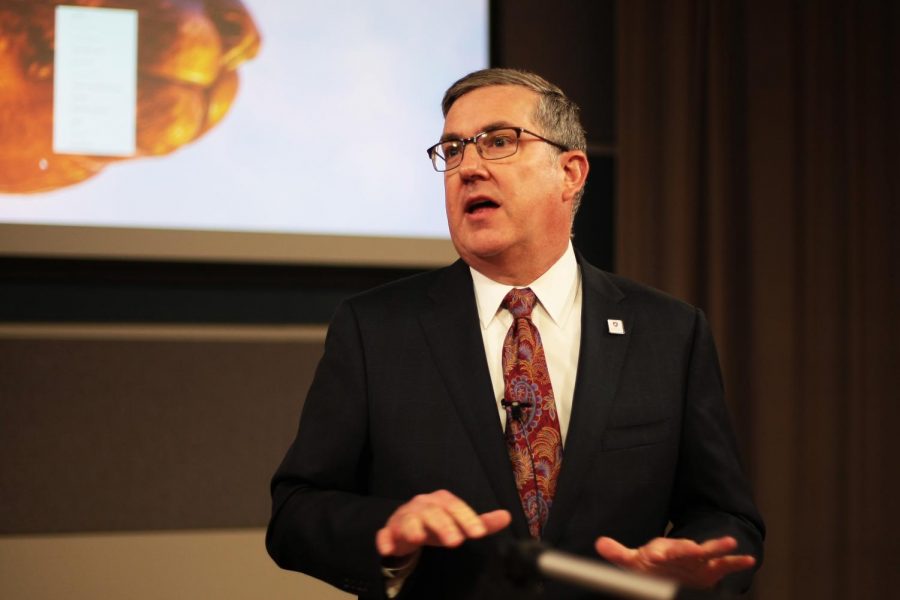WSU officials address COVID-19 concerns in online town hall
Fall 2020 will likely have “hybrid” instruction; employees still expected to telework
BEN SCHUH | DAILY EVERGREEN FILE
WSU President Kirk Schulz said WSU must submit a financial plan to the state government, which is due June 1.
May 15, 2020
WSU President Kirk Schulz said in a virtual town hall meeting today that administrators are planning for some in-person learning at all WSU campuses for the fall 2020 semester.
This does not mean that next semester will look “normal” like fall 2019 did, said Bryan Slinker, interim provost and executive vice president.
Schulz said in-person learning may involve a “flipped classroom” or hybrid model where lecture material is covered online and students meet for labs or extra assistance in person with social distancing practices.
“Education is more than content delivery,” Schulz said. “There is an inherent value in us being together, for me to be able to look and see, ‘Are they understanding what we’re talking about?’”
Slinker said fewer students withdrew from a course or the entire term this spring as compared to spring 2019. However, there were more incomplete and “X” grades.
“Students did stick with us,” Slinker said. “The goal is to keep that up and do better in the fall.”
Students should consider continuing their education instead of taking a gap year at this time, Schulz said. There is no guarantee that normal instruction will resume by fall 2021.
June Alive! orientation sessions are online, but administrators have not yet decided about July sessions, Slinker said.
WSU employees and research
Theresa Elliot-Cheslek, associate vice president and chief human resource officer, said WSU employees who are able to telework should continue to do so for the foreseeable future even though Whitman County was approved for a Phase 2 variance waiver.
Schulz said employees will receive plenty of notice about when they are expected to return to work.
Administrators have not made decisions about furloughs for WSU employees, Schulz said. A furlough is an unpaid leave of absence.
“There is no secret plan that has been made that we’re waiting to announce,” he said.
Slinker said the university is preparing to ramp up research this summer. Faculty members received a draft of research guidelines, and they have an opportunity to give feedback on the guidelines during a research town hall on Tuesday.
“Safety is paramount,” Slinker said, “but we all have a desire to get back in the research lab.”
Funding and budget cuts
WSU must submit a plan to the state government showing what budget cuts must be made if the state reduces funding for public universities, Schulz said, which is due June 1.
Nothing is set in stone yet when it comes to budget cuts, Schulz said. Administrators are planning and taking budget principles into consideration when managing fiscal decisions.
“I want to make sure people don’t think there’s two or three of us in some smoke-filled room in the back making these decisions,” Schulz said. “We’ll be inclusive in our decision-making.”
WSU received a total of $21.76 million from the CARES Act, said Stacy Pearson, vice president for finance and administration. Half will be distributed to students experiencing financial hardship due to the pandemic. The other half will go to the university to cover lost revenue and other expenses including emergency funds for students who do not qualify to receive money from the CARES Act.
The video recording of the town hall meeting can be accessed on YouTube and the audio transcript can be accessed here.










